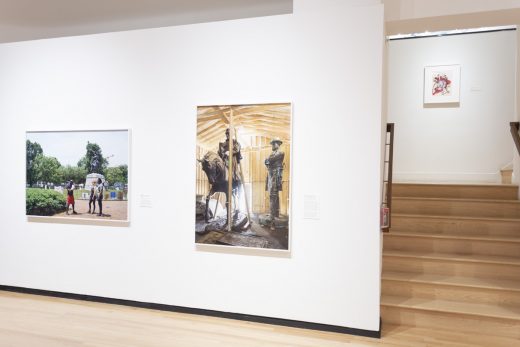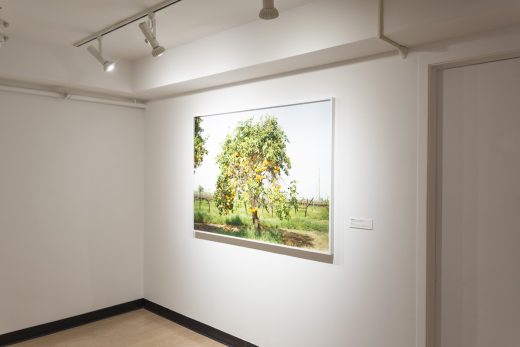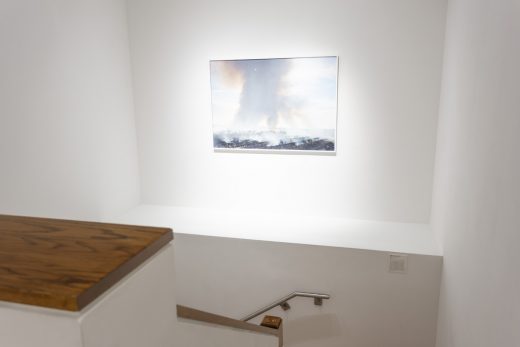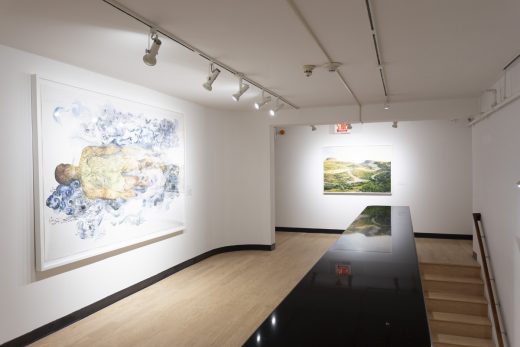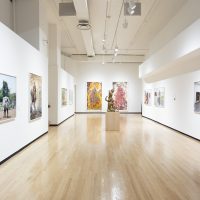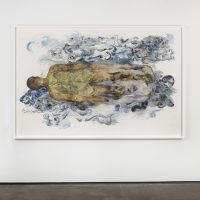An-My Lê

Since 2015, An-My Lê has used her camera to cast a critical eye on contemporary American politics in a capacious series of photographs titled Silent General. The series began with an invitation to document the making of the 2016 Hollywood film Free State of Jones, a fictionalized telling of the story of a Civil War soldier’s revolt against the Confederate Army. As Lê photographed the film crew on set near New Orleans, her images became reference points for the director’s subsequent shoots, producing a feedback loop of mediated images of constructed scenes. Though grounded in Lê’s longstanding interests in photographic meditations on war and the American military, the project likewise marked a new chapter in her work, initiating a sweeping look at the current political landscape of the American South, from the legacy of the Civil War and Confederate monuments to the US-Mexico border and its terrain and inhabitants.
Lê, who fled Vietnam with her family in 1975, began making landscape photography in 1994 after returning to the country for the first time. “I wanted to show Vietnam in a way I had not seen it shown before,” she reflected, “not devastated, not victimized, not romanticized. I felt I could do that best through my exploration of the landscape.” On the heels of her first photographic exploration of Vietnam, Lê produced her most well-known series, Small Wars (1999–2002), in which she worked with Vietnam War reenactors in the forests of North Carolina and Virginia. Though many of them did not partake in the war itself, they were, like Lê, drawn to landscape as a site for making sense of events of the past. In photographing a reconstruction of war rather than war itself, Lê gave the genre a new twist—pointing deliberately to the fact that a photograph is always a mediation of reality and mining this slipperiness as a space of possibility.
Lê’s choice of a traditional, large-format camera (and tripod) common to topographical photography facilitates this effect. Whereas war or documentarian photographers often aim for maximum mobility and proximity to their human subjects, Lê’s cumbersome apparatus provides a wide and distant view, one more closely aligned with the tradition of 19th-century military or landscape painting. With the horizontality and openness of a proscenium stage, these images not only reflect their staged construction, they invite the viewer to project her own thoughts, questions, and memories onto the scene, infusing it with the particularities of subjectivity. “It’s about context,” Lê has stated. “By stepping back you need to take responsibility for the action. . . . You need to take responsibility for your origins, for your history.” From her early interest in Vietnam War reenactors to her recent work on the legacy of the Civil War, Lê’s images mine the unreliability of photographic processes. In doing so, they prompt us to “step back”—to consider our own role in the construction of the narratives they depict.
